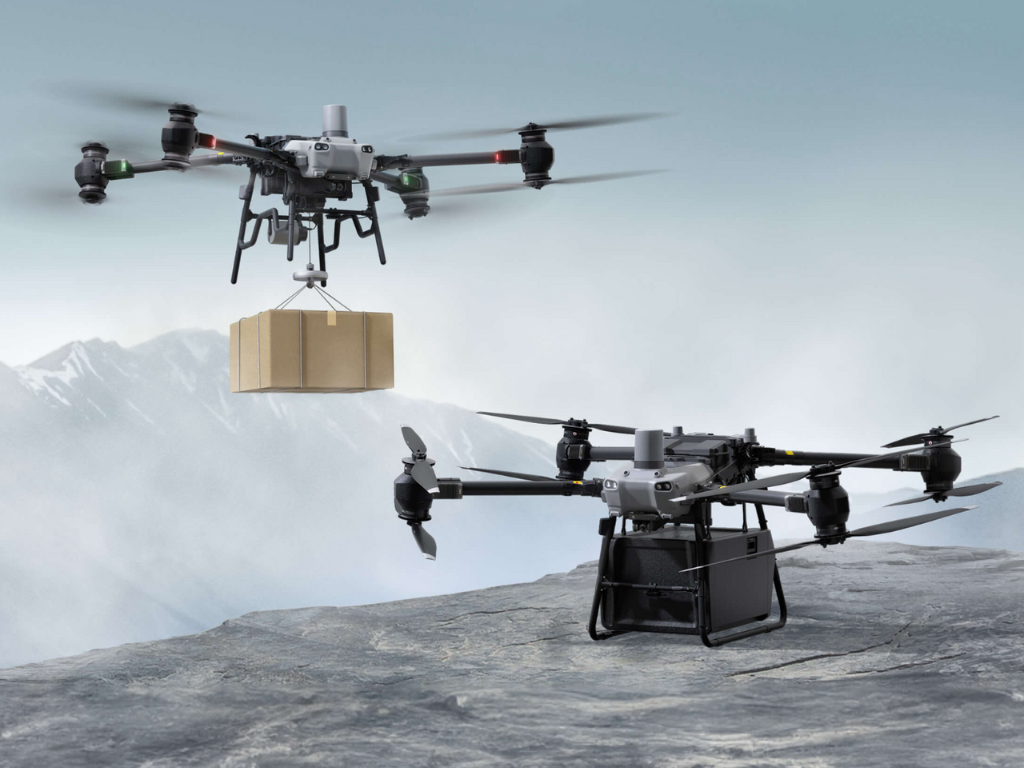
Products
DJI FlyCart 30 Delivery Drone Launched Globally
The DJI FlyCart 30 represents a new era of low-altitude transportation.
DJI launches the DJI FlyCart 30 delivery drone globally, including to the UK;
FlyCart 30 has two delivery modes: Cargo/container and crane/winch;
New delivery drone can carry a maximum load of 30kg for 16km with dual batteries;
DJI FlyCart 30 represents an exciting and innovative development in the drone delivery sector.
The DJI FlyCart 30 delivery drone has now been released globally - including to the UK - following its initial launch in China last year.
It sees DJI officially enter the delivery and logistics market, with the drone manufacturer citing demand across various industries, including emergency scenarios where other modes of transport might be difficult to use.
The DJI FlyCart 30 is designed to overcome traditional transport challenges with its large payload capacity, long operation range, high reliability, and intelligent features.
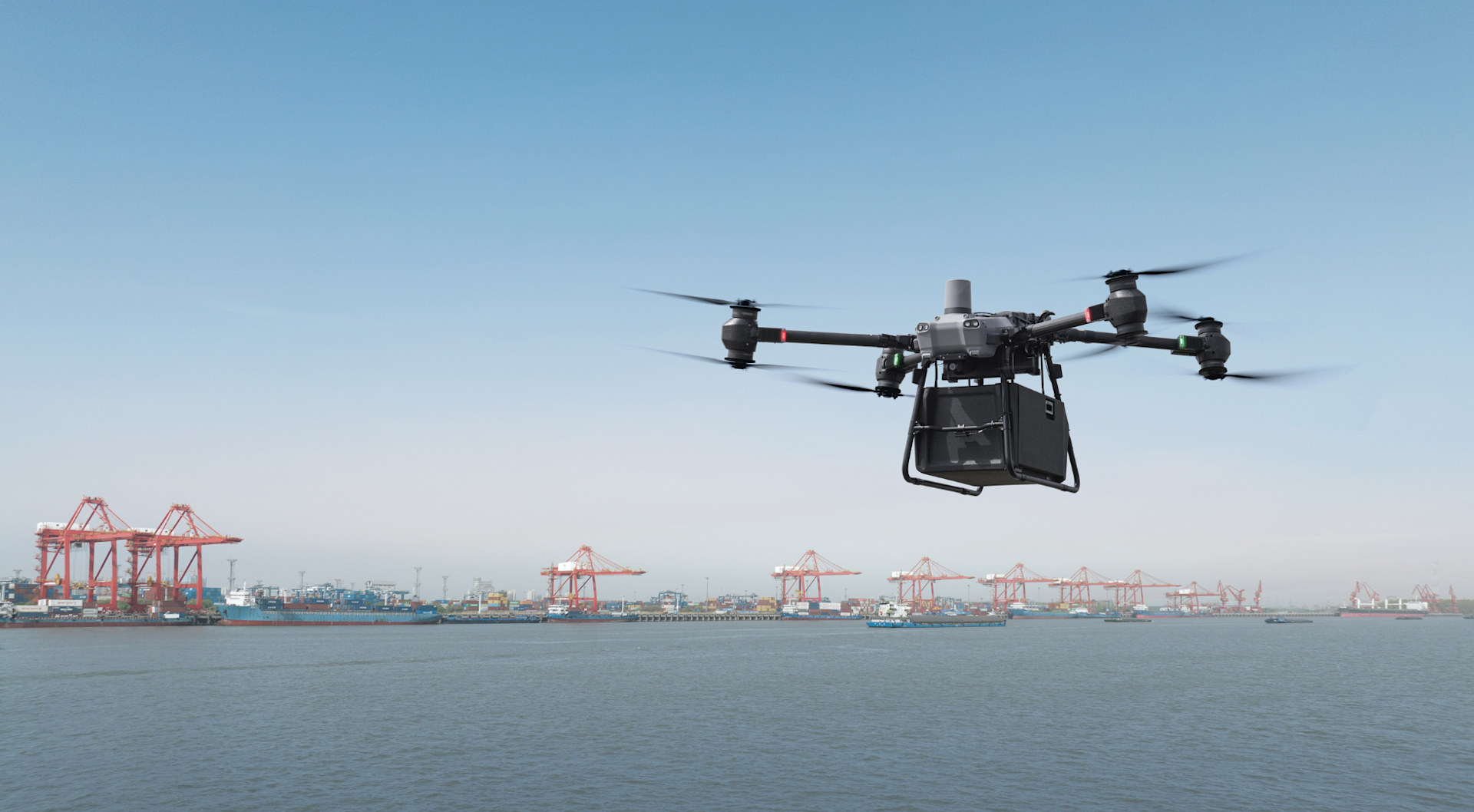
In the UK, numerous trials have been conducted by various organisations to test the delivery-drone concept, while government sign-off for a drone superhighway across a 164-mile stretch of England represents a significant step towards developing a delivery-drone network.
The DJI FlyCart 30 adopts a 4-axis, 8-blade multi-rotor configuration and can carry a maximum load of 30kg for 16km with dual batteries. It supports two modes of delivery: A cargo box and a crane/winch.
DJI FlyCart 30: Key Features
DJI says the FlyCart 30 ushers in a new era of low-altitude transportation.
It supports two kinds of payload mode, Cargo and Winch. The cargo box supports quick release and automatic weighing, while the winch system is used for scenarios where the drone cannot be landed or the goods cannot be put in the cargo.
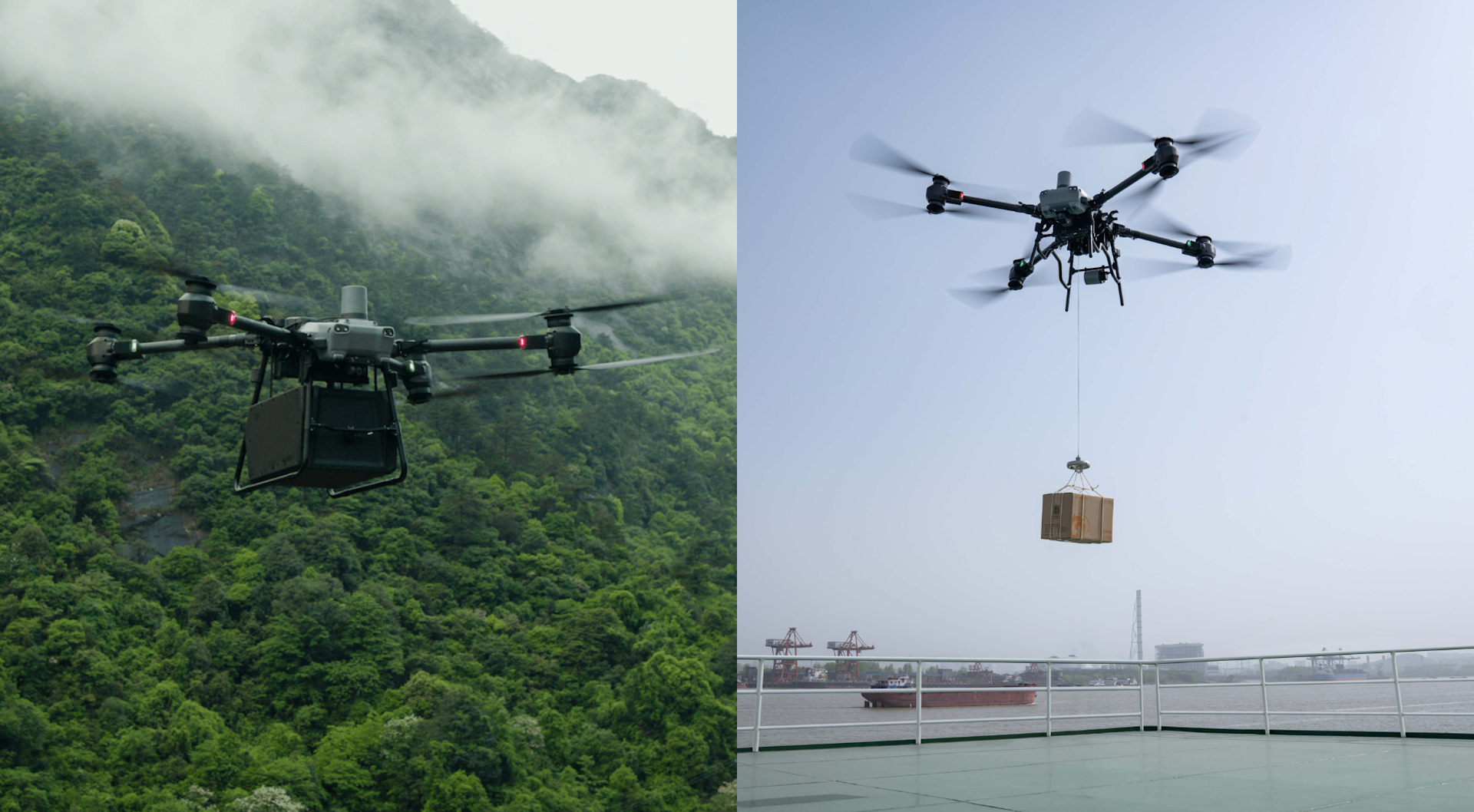
In container/cargo mode, the standard configuration is a general-sized EPP container with a maximum volume of 70 litres (internal dimensions are approximately: length 573mm, width 416mm, height 306mm).
It can be disassembled and assembled quickly to facilitate loading and unloading.
The cargo box supports weight and centre of gravity detection to ensure the cargo is loaded correctly and make the flight safer and more stable.
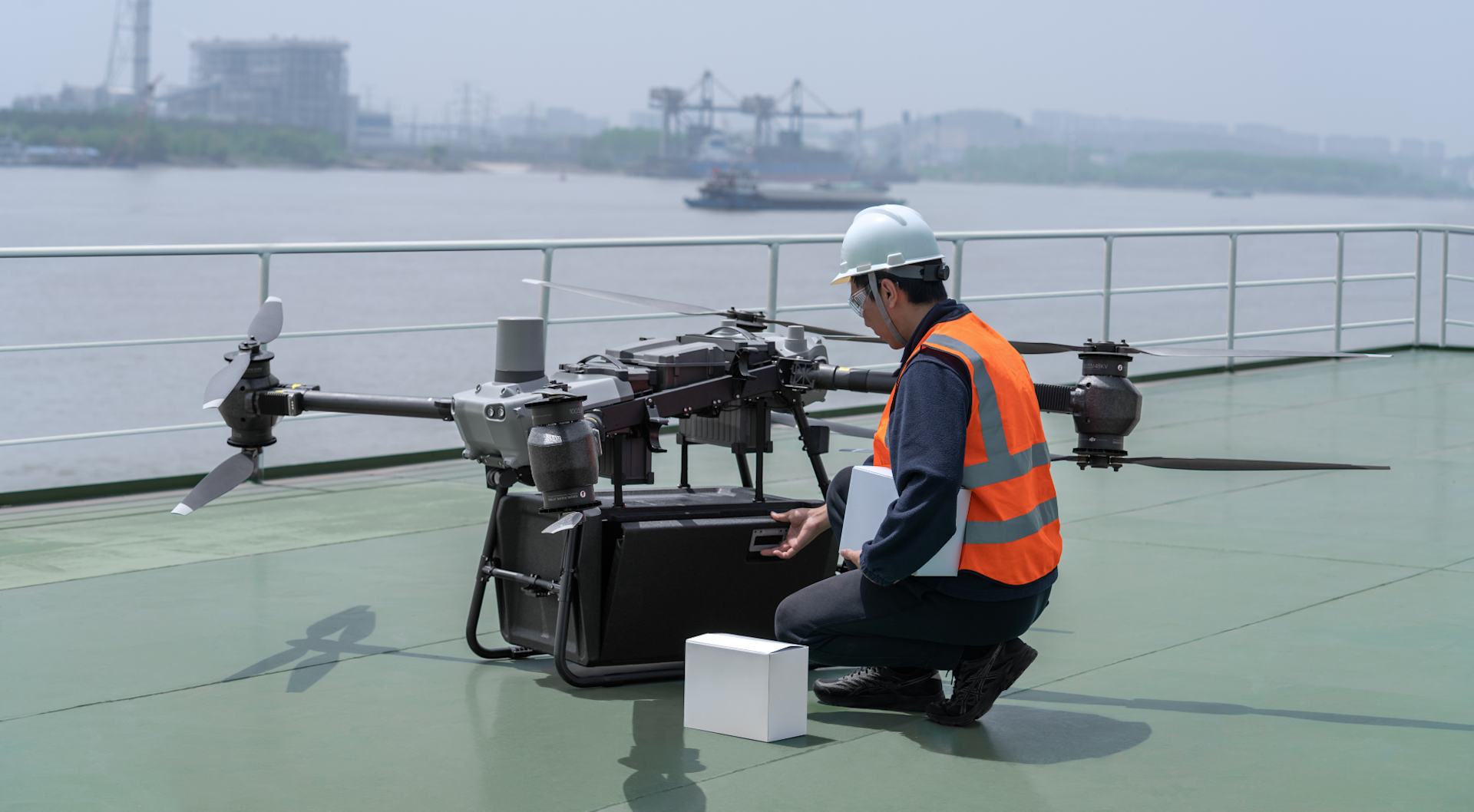
The crane system has a cable drop mode and supports automatic and manual control methods.
The maximum retractable weight is 40kg, the maximum release length is 20 metres, and the fastest retractable speed can reach 0.8 m/s.
It has an anti-sway function to eliminate the swing of the cargo.
The AR projection function helps users quickly select the delivery location of the goods, while goods can be automatically released when they touch the ground for precise delivery.
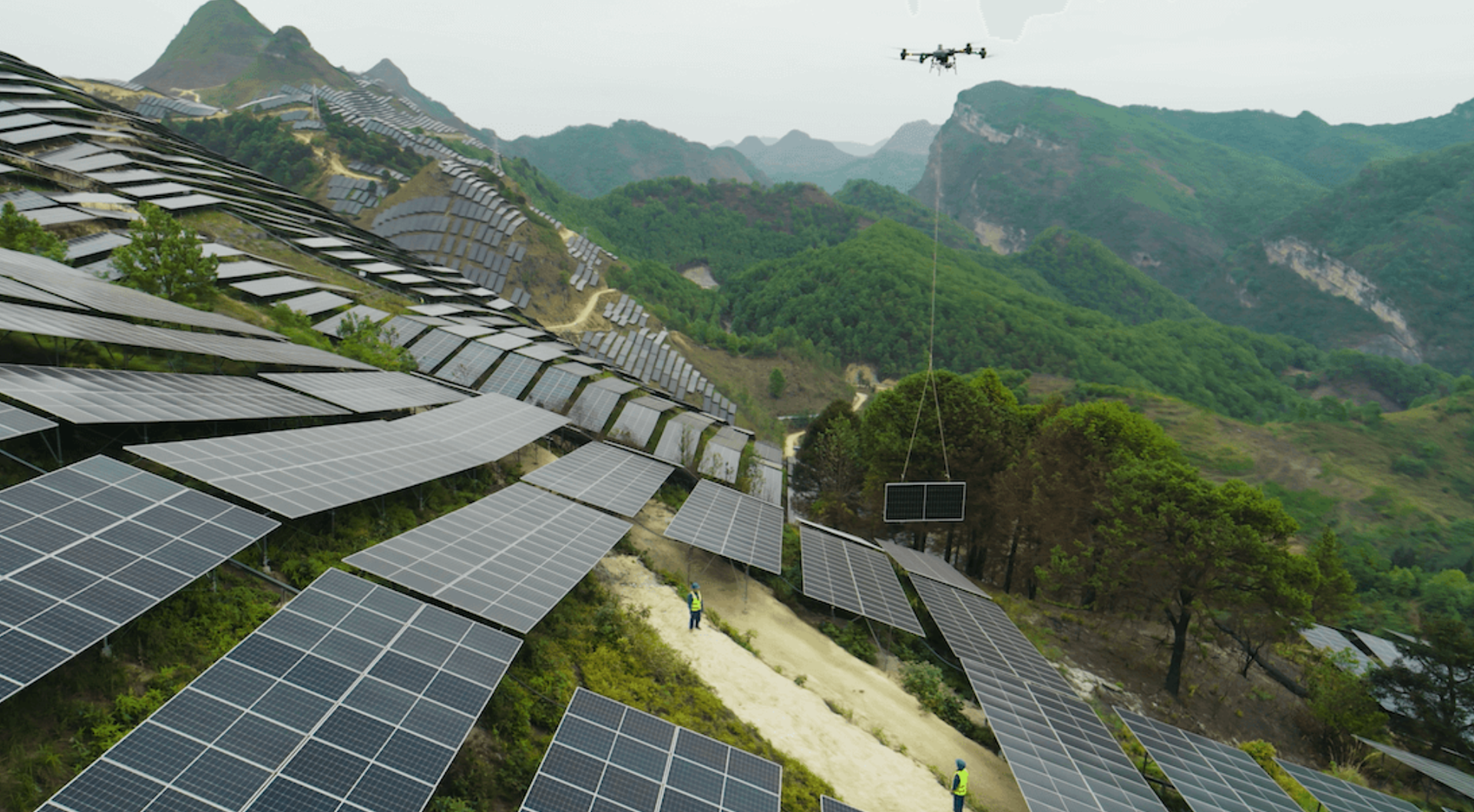
Other key features include:
Heavy Load: 30kg maximum carrying weight (dual batteries); 40kg maximum carrying weight (single battery).
Long Distance: 28km maximum flight distance (no load, dual battery); 16km maximum flight distance (30kg load, dual battery). Maximum flight time of 18 minutes with double battery and 30kg load.
Fast Travel: Maximum flight speed of 20m/s; 15m/s cruising speed.
All-weather Operations: IP55 weather protection; -20°C to 45°C working environment temperature; 12m/s maximum wind-speed resistance.
Strong Signal: DJI FlyCart 30 is equipped with DJI O3 image transmission, and the image transmission distance can reach up to 20 km (FCC) or 8km (CE). Operators can also benefit from 4G enhanced image transmission.
Enhanced Safety Features: Multi-directional, all-weather, all-time intelligent obstacle avoidance during flight; dual radar; built-in ADS-B signal receiver; built-in parachute; flight redundancy.
DJI Delivery Hub: One-stop airborne cloud platform. Efficiently plan equipment tasks, fully control operation dynamics, centrally manage team resources, and statistically analyse multi-dimensional data.
PSDK Development: The DJI FlyCart 30 supports PSDK development, allowing for third-party integration, including solutions like a loudspeaker and spotlight.
DJI FlyCart 30: Key Specifications
The table below provides an overview of some of the key specifications of the DJI FlyCart 30.
Empty weight | 42.5kg (without batteries) 65kg (with dual batteries) |
Maximum take-off weight | 95 kg (standard cargo box, near sea level) |
Dimensions (arms extended, propellers extended) | Length 2800 mm, width 3085 mm, height 947 mm |
Maximum flight distance (no load) | Dual battery: 28km Single battery: 12km |
Maximum flight distance (full load) | Double battery (30kg load): 16km Single battery (40kg load): 8km |
Maximum flight time (full load) | Double battery (load 30kg): 18 minutes Single battery (load 40kg): 9 minutes |
Operating temperature | -20°C to 45°C |
IP Rating | IP55 |
Maximum horizontal flight speed | 20 m/s (with a load of 30kg) |
Maximum flight altitude | 6000 metres (without load) |
Maximum wind speed | 12 m/s (with a load of 30kg) |
Maximum Flight Altitude | 6,000 metres (without load); 3,000 metres is maximum safe flight altitude for the drone with a full load |
Image Transmission | 20 km (FCC) 8 km (CE/SRRC/MIC) |
4G | 4G Convergence Function: Yes, DJI enhanced image transmission module. 4G Dongle Models: DJI Enhanced Video Transmission Module |
These range of features make the DJI FlyCart 30 suitably designed for efficient transportation, which can effectively improve the practical feasibility of UAV transportation, meet the material transportation needs of mountainous, shore-based, rural transportation and various emergency scenarios, and enable more people to enjoy the benefits of UAV transportation.
What Are Delivery Drones?
Delivery drones are specifically designed to transport and deliver goods from one location to another.
They have gained attention as a potential solution to revolutionise the way goods are transported, offering benefits such as faster delivery times, reduced traffic congestion, and the ability to reach remote or hard-to-access areas.
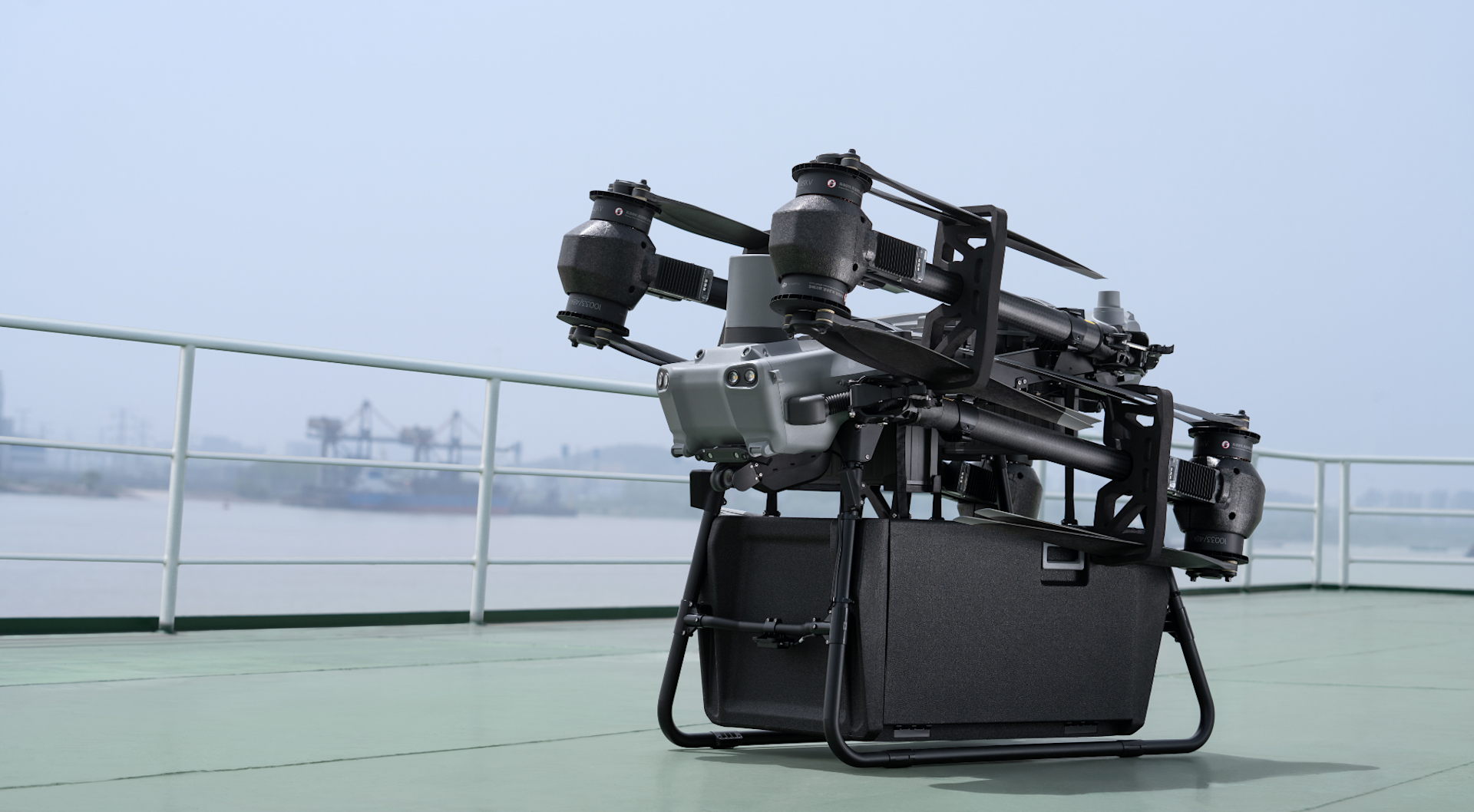
Companies in various industries, such as e-commerce, logistics, and healthcare, have been exploring the use of delivery drones to streamline operations.
And now that DJI, the world's largest drone manufacturer, has entered the market, the evolution of delivery drones looks set to gather pace.
What Are The Benefits Of Delivery Drones?
Drone deliveries have many benefits. These include:
Enhanced logistics: Deliveries performed by traditional vehicles such as vans need to stick to the roads, which can prove challenging when carriers are planning routes to get from a warehouse to a customer. Drone deliveries are completed in a straight line from the sorting centre to the package’s destination, making the logistics of the operation far more efficient.
Speed: Drone deliveries are essentially a direct-to-customer airmail solution, making them much faster than traditional delivery methods.
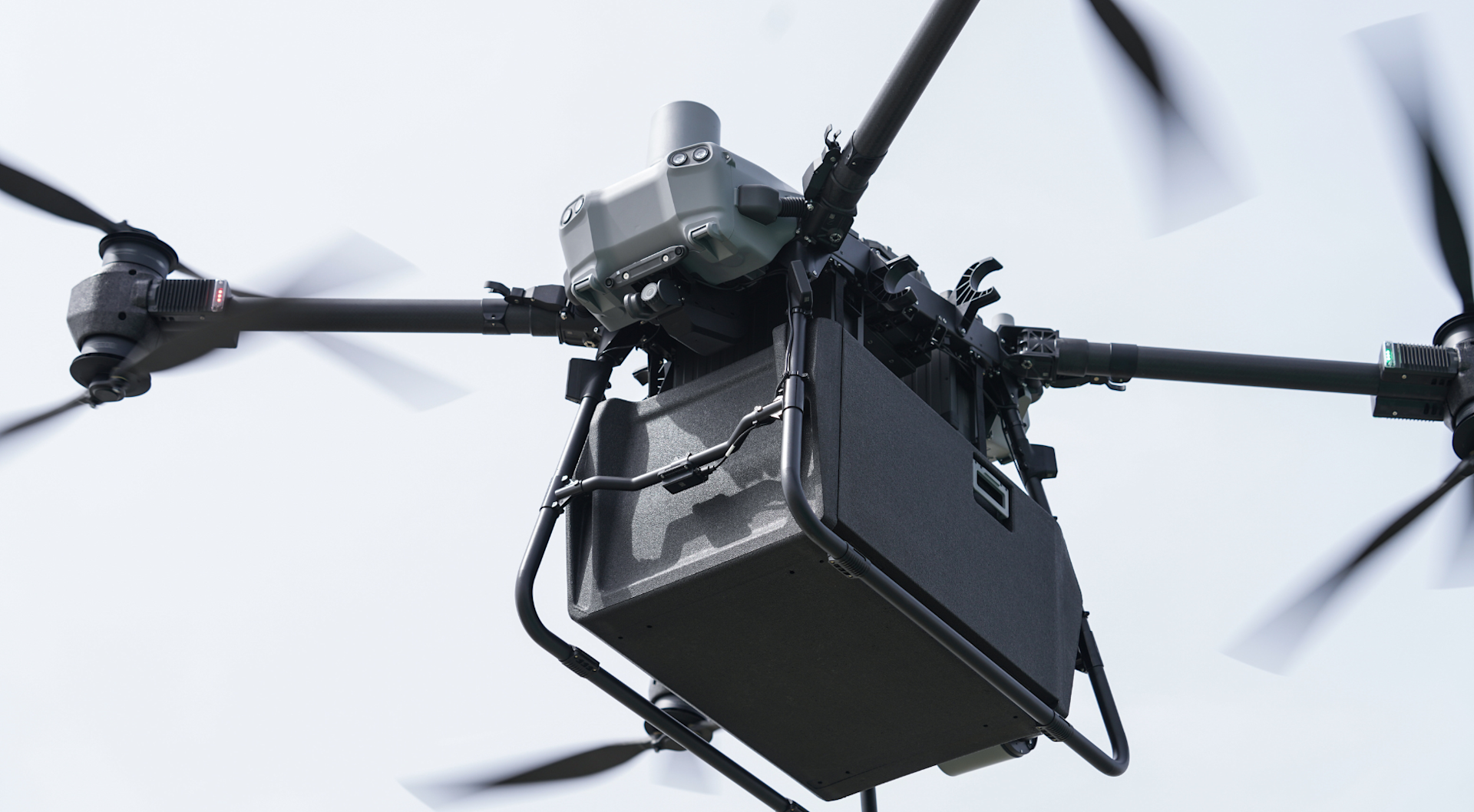
Less Traffic: According to Amazon - which has been trialling delivery drones - the vast majority of customer packages are less than five pounds, making them ideal for drone technology. As it stands now, all of those packages are taking up space in delivery vehicles. If drone deliveries could take over all of those light packages, it would free up room in the delivery vehicles, meaning fewer would need to be on the road at one time.
Cost: While the initial price of drone technology may be high, there is far less labour involved, making drone deliveries more cost-effective over time.
Environmentally-friendly: Most drones run on electricity, making them exceptionally green. Also, with fewer delivery vehicles on the road, carbon emissions would drop.
What Are The Use Cases Of Delivery Dronres?
Delivery drones have a wide range of potential use cases across various industries. Prominent ones include:
E-Commerce and Retail: Delivery drones can revolutionise the way products are shipped and delivered to customers. They can enable faster and more efficient delivery of online orders, reducing the time it takes for customers to receive their purchases.
Medical Supplies: Delivery drones can be used to transport medical supplies and equipment, such as medications, vaccines, defibrillators, and even organs for transplantation. This crucial and potentially life-saving cargo can be transported by drone between hospital sites and medical centres or to remote or disaster-stricken areas where timely delivery is critical.
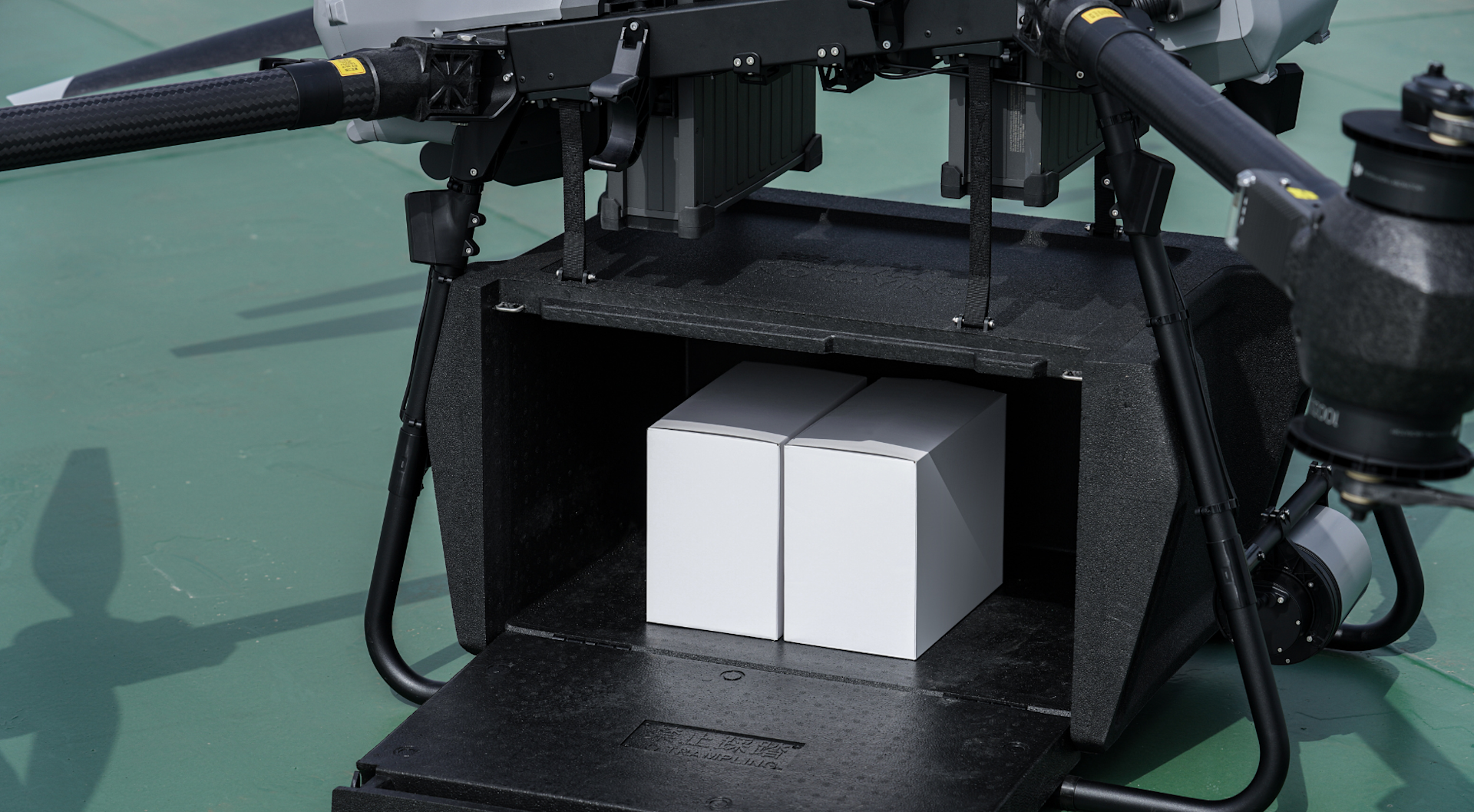
Disaster Relief: In the aftermath of natural disasters, delivery drones can quickly deliver essential supplies like food, water, and medical aid to affected areas that may be difficult to access by traditional means.
Remote Areas: Drones can deliver goods to remote locations, including rural communities or places with inadequate road infrastructure. This is particularly useful for delivering necessities like food, medicine, and other essential items.
Food Delivery: Some companies are exploring the use of drones to deliver food orders from restaurants to customers.
Offshore Transport: Carry items from shore to ship or to offshore platforms. Delivery drones enable immediate dispatching and mobile transportation. They combat the high cost of supply ships and helicopters, and tackle the problem of low frequency and slow response.
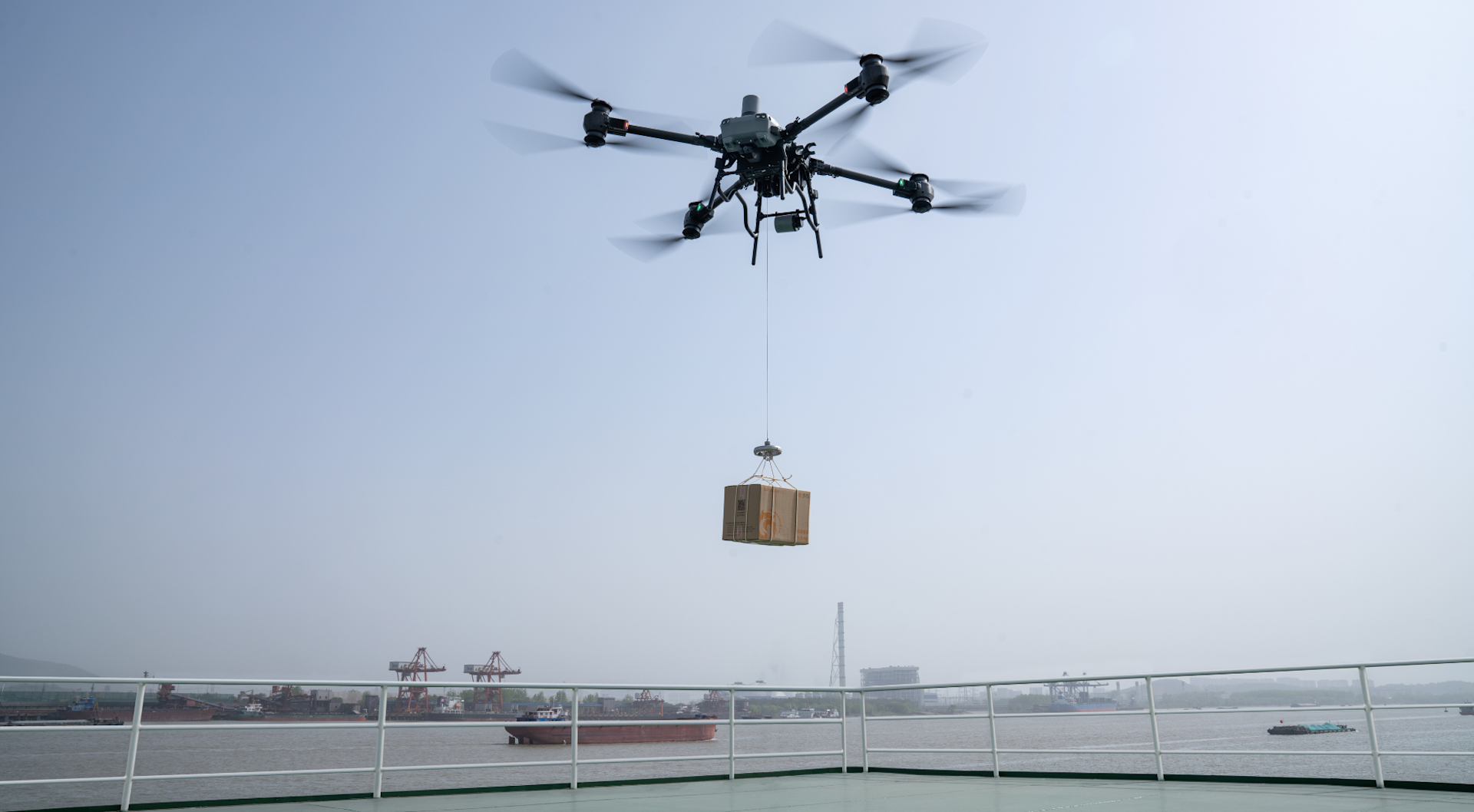
Delivery Drones In The UK
In the UK, moves are already being made to prove the concept for delivery drones and develop a standardised and accepted airspace policy that enables BVLOS operations.
For instance, in 2022, drone deliveries inched closer to becoming a reality after the UK government unveiled plans to build a 164-mile automated drone superhighway by mid-2024.
The Skyway project would connect the airspace between Cambridge, Oxford, Rugby, Milton Keynes, and Coventry, with an option to expand the corridor to other locations in the country.
The long-term aim of the project is to connect towns and cities, as well as transport and package delivery hubs across the country using drone networks.
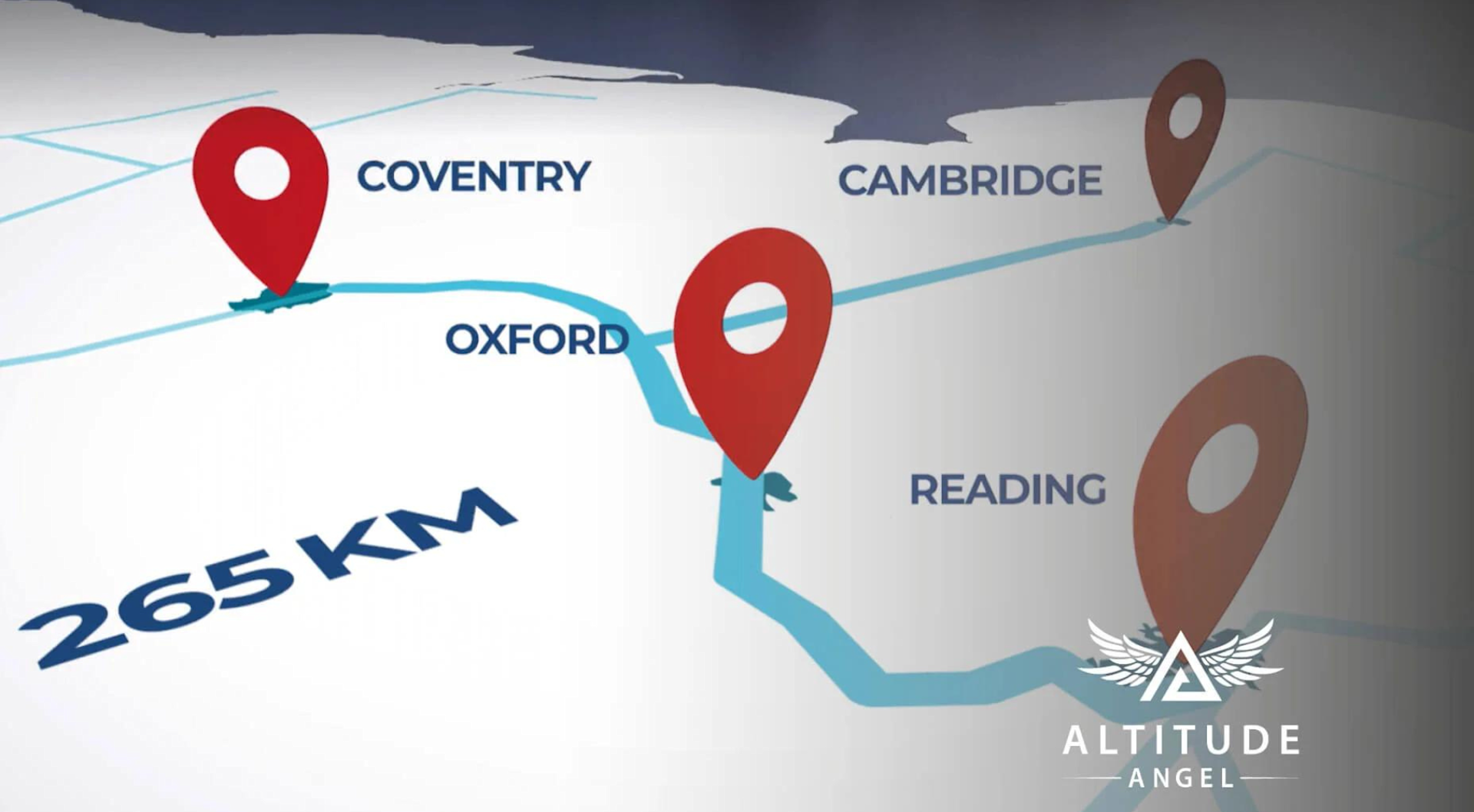
Recently, Royal Mail launched a drone service to improve delivery times on the Orkney islands, off the north-eastern coast of Scotland, as the often challenging geography and weather can cause disruption and pose safety risks to postal workers.
And last year, Northumbria Healthcare NHS Foundation Trust conducted trials to carry chemotherapy drugs, blood samples and other items between hospital sites to reduce delivery times across its predominantly rural patch of Northumberland and North Tyneside.
These projects represent the long-term aspiration to establish a drone-delivery network in the UK - and DJI's new aircraft would be perfectly suited to enter this space.
Meanwhile, towards the end of 2023, six projects - including those based on medical drone deliveries and sky highways - were chosen for trials to support the development of BVLOS capabilities, as part of a UK CAA scheme.
The UK CAA also unveiled a sandbox to develop a strategy for BVLOS drone operations in unsegregated airspace. Find out more, here.
And at the end of 2023, the CAA launched a consultation to develop a training framework to cover complex operations, such as BVLOS. Find out more, here.
However, the DJI Delivery drone also offers plenty of scope and operational benefits to UK drone programmes in the shorter, more immediate term.
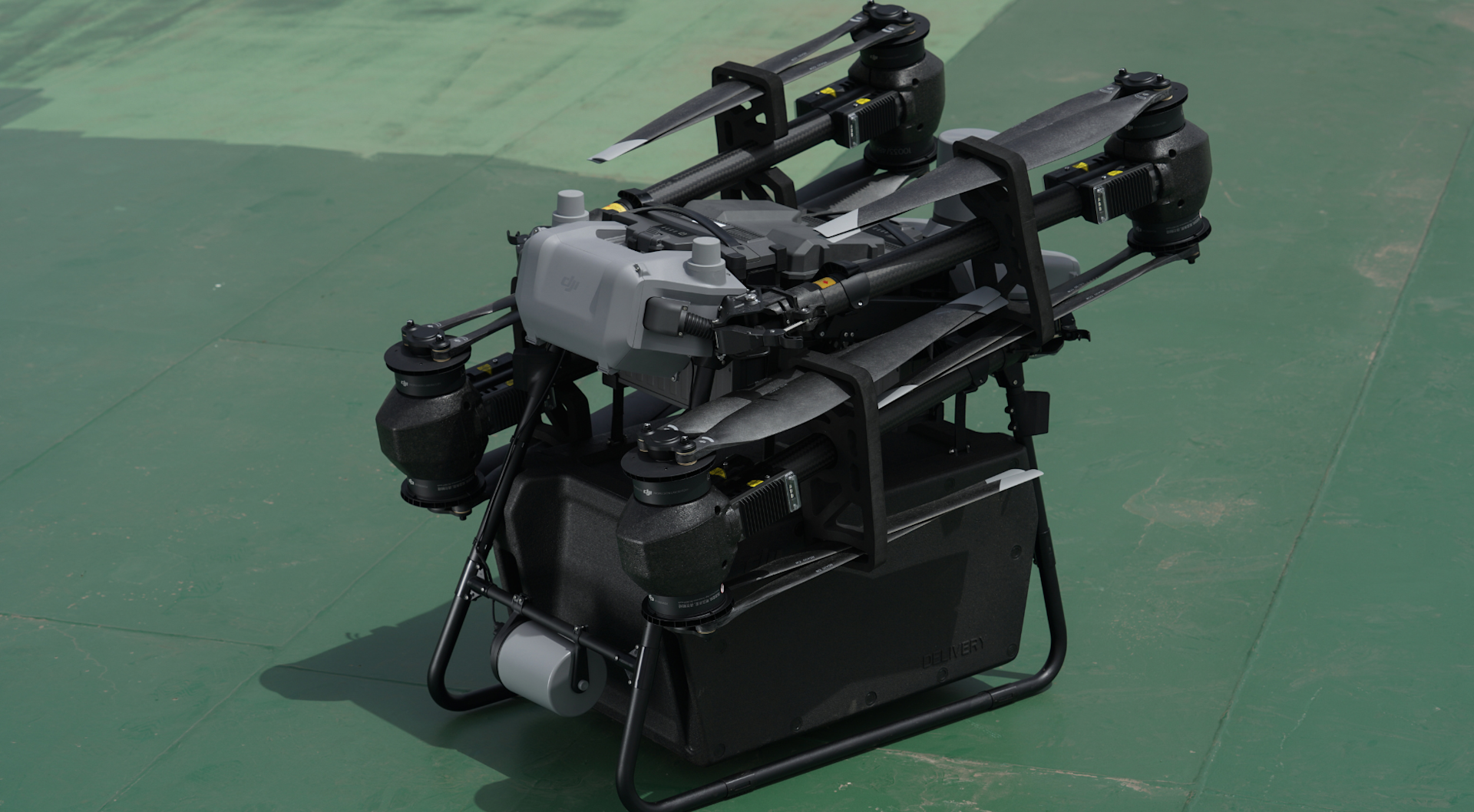
Representing DJI's first heavy-lift aircraft since the M600 range, there are multiple use-cases where the drone could be flown within the confines of a more simplistic VLOS capacity to deliver items within visual line of site to benefit a range of sectors, such as emergency response and port-to-ship deliveries of defibrillators and document handovers.
In essence, many organisations will see tangible benefits of this new drone in both a short and long-term capacity.
In any case, the weight of the FlyCart 30 will require an OSC. To find out more, and to see how heliguy™ can help, click here.
To discuss the DJI FlyCart 30 and the relevant training, contact us.
